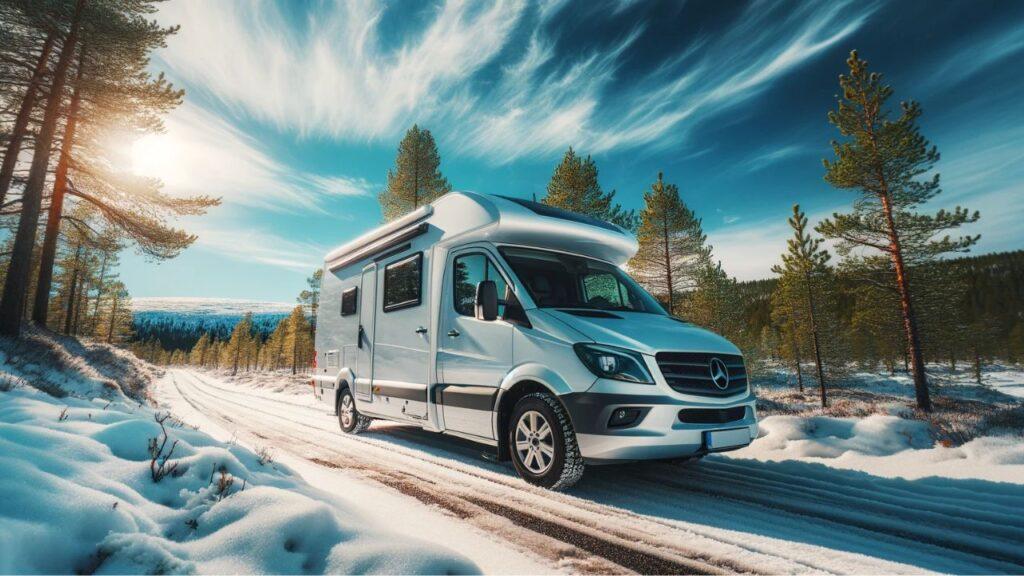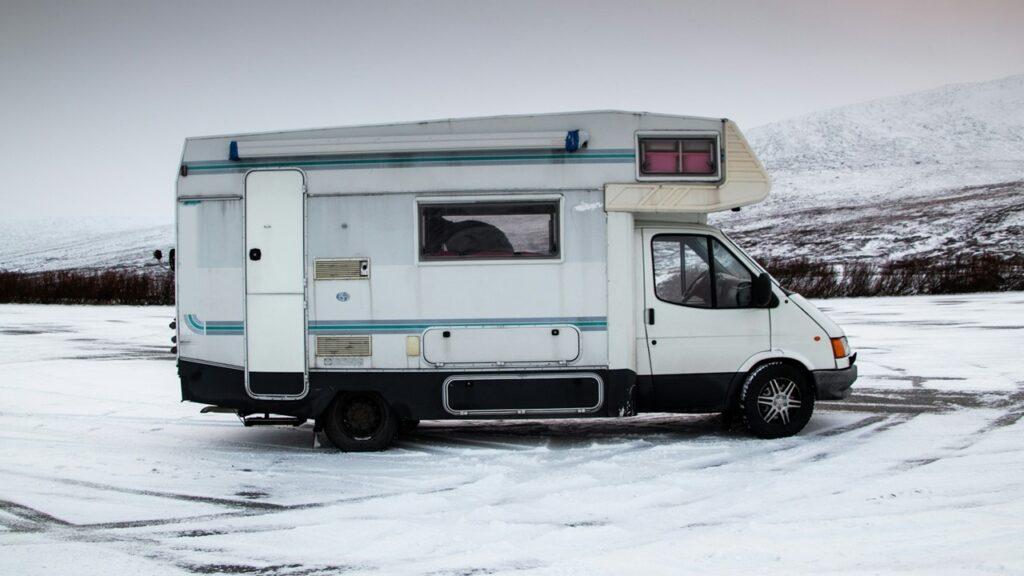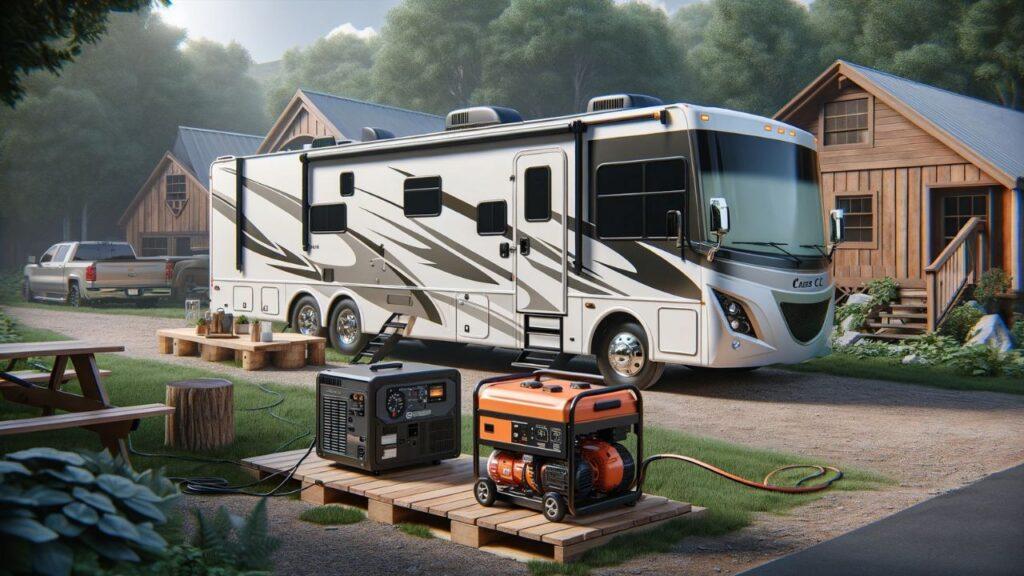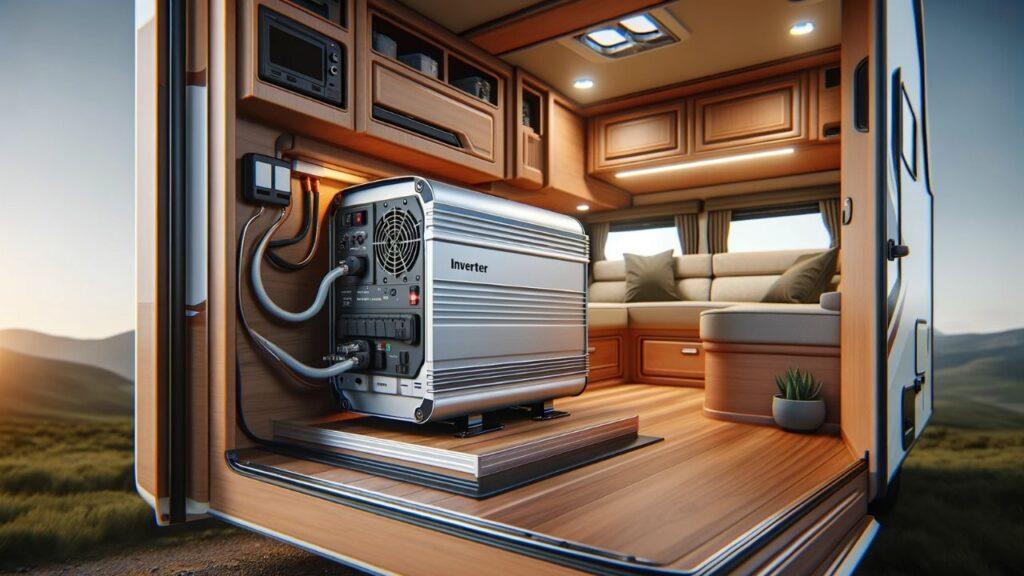
Going for a winter RV adventure presents a unique set of challenges, often heightened by the brisk, unforgiving cold. Navigating these icy terrains, RV campers frequently encounter the daunting task of maintaining a comfortable and safe environment within their mobile havens. Among these challenges, ensuring that RV water pipes remain unfrozen emerges as a paramount concern. The significance of this cannot be overstated; frozen pipes can lead to extensive damage, transforming a serene winter escapade into a stressful ordeal. In this guide, titled “Steps To Prevent RV Water Pipes From Freezing In Cold Camping” we delve into effective strategies and RV maintenance tips to combat this issue. Furthermore, this article will provide a comprehensive walkthrough, peppered with RV life hacks and essential RV winterizing techniques, all designed to safeguard your vehicle’s plumbing system against the harshness of winter. As we embark on this informative journey, let’s explore the various solutions that cater to both seasoned RVers and those new to the nomadic lifestyle. This guide’s aim is not just to provide you with easy-to-implement methods for a worry-free cold-weather camping experience.
Understanding the Risks of Freezing Water Pipes in RVs
In the heart of winter, RV enthusiasts face a critical challenge: preventing their water pipes from freezing. This section delves deep into the intricacies of why pipes in RVs freeze, the potential damage this can cause, and the fiscal implications of such an occurrence. More importantly, we’ll explore why proactive prevention is far more beneficial than the reactive repairs that might follow.
How Pipes Freeze in RVs
In the frigid temperatures of winter, the RV water system becomes vulnerable. Water, by its nature, expands upon freezing, a fundamental principle that leads to pipe freezing in RVs. This phenomenon primarily occurs when the RV is insufficiently insulated or heated, allowing the ambient cold to seep through and solidify the water within the pipes. Understanding this mechanic is crucial for any RV owner looking to maintain their vehicle in top condition through the colder months.
Potential Damages and Costs
Frozen pipes in an RV are more than just a minor inconvenience; they can lead to significant damage. When water freezes and expands inside pipes, it can cause cracks or bursts, leading to leaks and water damage within the RV. The cost of repairing such damages can be substantial. This is not only in terms of monetary value but also in the time and effort required for repairs. This can disrupt your RV travels and add unexpected expenses to your RVing budget.
Proactive Prevention vs. Reactive Repairs
In the context of RV maintenance, an ounce of prevention is worth a pound of cure. Proactive measures such as proper insulation, regular inspections, and use of RV-specific antifreeze can mitigate the risk of frozen pipes. These preventive steps are typically more cost-effective and less time-consuming than the reactive approach of dealing with the aftermath of frozen pipes. By focusing on prevention, RV owners can enjoy their winter adventures with peace of mind, knowing their vehicle is well-prepared for the cold.
Understanding and mitigating the risks of freezing water pipes in your RV is an essential aspect of winter RV maintenance. Taking proactive steps not only saves money but also preserves the integrity of your mobile home.
Insulation Techniques for RV Water Pipes
As the mercury drops, the need for effective insulation in your RV becomes paramount. This segment focuses on selecting the right insulation materials, providing a comprehensive guide on how to insulate your RV water pipes, and evaluating the effectiveness of your insulation efforts.
Choosing Insulation Materials
The quest for the right insulation material for your RV’s water pipes is a crucial step towards winter readiness. Several options are available, ranging from foam pipe covers to insulated wraps and electric heat tapes. Each material comes with its own set of pros and cons, catering to different RV models and specific RV winterizing needs. Understanding these materials’ properties is the first step in safeguarding your RV plumbing system against the cold.
Insulating Pipes: A Step-by-Step Guide
Armed with the right insulation material, the next step is the actual insulation of your RV’s water pipes. This comprehensive guide will walk you through the process, from preparing the pipes and cutting the insulation to the correct length, to securely fastening it around the pipes. This DIY approach to RV maintenance can be a rewarding experience, ensuring that your RV remains functional and damage-free during your winter camping trips.
Evaluating Insulation Effectiveness
Once your RV’s water pipes are insulated, assessing the effectiveness of your work is crucial. This involves checking for any exposed areas, ensuring the insulation is securely in place, and possibly considering supplemental heat sources like heat tape if necessary. Regular checks and maintenance are key to ensuring that your RV is ready to face the chilly months ahead.
Proper insulation of your RV’s water pipes is a critical step in preparing for cold-weather RVing. By selecting the right materials, following a detailed insulation guide, and evaluating the effectiveness of your work, you can enjoy your winter adventures without the worry of freezing pipes.
RV Water System Winterization
As the leaves turn and the air grows crisp, RV owners face the important task of preparing their vehicles for winter. This process, known as winterization, is essential to protect the RV water system from the harsh realities of freezing temperatures. Let’s embark on a journey through the necessary steps, the crucial role of antifreeze, and maintaining the system during the cold months.
Winterization Process Overview
Winterizing your RV’s water system involves a methodical approach, beginning with draining all tanks and lines. The key is to leave no water that could freeze and expand, causing potential damage. After draining, blowing out the lines with compressed air ensures that no moisture remains. This process, while straightforward, is essential for any RV enthusiast seeking to avoid winter woes.
Role of Antifreeze in Winterization
In the realm of RV winterization, antifreeze is the unsung hero. This non-toxic liquid, specially formulated for RVs, replaces water in the system to prevent freezing. Correctly adding antifreeze involves ensuring it reaches every nook of your RV’s plumbing. This step is a shield against the freezing cold, safeguarding your mobile abode’s water system.
Maintaining Water Systems in Winter
Even after winterization, the RV water system requires attention during the winter months. It’s vital to check that the antifreeze is still effective, especially if you’re using your RV occasionally in the cold season. These regular checks ensure that your RV remains a cozy and functional refuge throughout the winter months.
Winterizing your RV water system is a critical step in your RV maintenance routine. By following these steps, you can enjoy the serenity of winter without concern for your RV’s plumbing system.
Heating Solutions for RV Water Pipes
As winter’s frost sets in, safeguarding your RV’s water pipes becomes a top priority. The right heating solutions can be the difference between a smooth RV experience and a frosty problem. This guide will illuminate the types of heating solutions available, their installation, and crucial considerations for safety and energy efficiency.
Types of Heating Solutions
Choosing a heating solution for your RV’s water pipes is a decision that blends practicality with foresight. Options like heating cables and heat tapes offer flexibility and efficiency. Heating cables, often straightforward to install, wrap around the pipes, while heat tapes can be tailored to fit. The choice hinges on your RV’s specific needs and the expected intensity of the winter chill.
Installing Heating Solutions
The installation of these heating solutions is a task that demands precision and care. Ensuring direct contact between the heating element and the pipes is crucial. This might mean preparing the pipes beforehand and using the right insulation to encase the heating elements. A well-executed installation is the cornerstone of effective freeze prevention in your RV’s plumbing.
Safety and Energy Efficiency
While heating your RV’s pipes is essential, it should be done with an eye on safety and energy usage. Using thermostatically controlled devices helps manage energy consumption, and regular inspections prevent potential hazards. These considerations are integral to maintaining a safe and energy-efficient RV throughout the chill of winter.
Equipping your RV’s water pipes with the appropriate heating solutions is a key aspect of winter preparation. By focusing on correct installation and mindful of safety and energy, you can ensure your RV adventures continue smoothly, even as temperatures plummet.
Monitoring and Maintaining Temperature Inside the RV
In the midst of winter’s chill, maintaining a comfortable temperature inside your RV becomes essential. This section explores effective heating methods, strategies for monitoring temperature, and troubleshooting common heating issues. These insights are crucial for ensuring a warm and comfortable environment in your RV during cold weather expeditions.
Effective RV Heating Methods
Efficient use of RV heaters and furnaces is pivotal in maintaining a cozy atmosphere. It’s not just about turning up the heat; it’s about understanding how your RV’s heating system works and using it wisely. This involves regular maintenance of the furnace, optimizing airflow for even heat distribution, and considering supplementary heating sources if necessary. These tips ensure you stay warm while conserving energy in your RV.
Temperature Monitoring Strategies
Keeping a vigilant eye on the temperature inside your RV is key to a comfortable winter camping experience. This can be achieved in many ways. This includes installing digital thermostats and using indoor temperature monitors. Regular checks help in maintaining optimal living conditions and preemptively addressing any heating irregularities.
Troubleshooting Common Heating Issues
Even the best-maintained RV heating systems can encounter problems. Common issues range from furnace malfunctions to uneven heating within the RV. This section addresses these challenges and offers practical solutions, ensuring you’re well-equipped to handle any heating hiccups during your travels.
Effective heating and temperature monitoring are crucial for a pleasant RV camping experience in cold weather. By implementing these strategies, you ensure your mobile home remains a warm sanctuary against the winter chill.
Practical Tips for Cold Weather RV Camping
RV camping in cold weather brings its own set of challenges and rewards. This guide provides practical tips for selecting the right campsite, maintaining your RV to prevent freezing, and managing water use under chilly conditions. These tips are designed to enhance your cold-weather camping experience, safer and comfortable.
Selecting the Right Campsite
Choosing the right campsite is vital for a successful winter RV camping trip. Look for locations that offer protection from harsh winds, have access to sunlight, and are equipped with necessary amenities. It’s also important to consider the accessibility of the site, especially in areas prone to heavy snowfall. The right campsite can make a significant difference in your winter camping experience.
Daily Maintenance to Prevent Freezing
Regular maintenance is key to preventing your RV from succumbing to the cold. This includes inspecting water lines, ensuring adequate insulation, and monitoring the RV’s heating system. Simple daily checks can prevent major issues, keeping your RV in optimal condition throughout your winter journey.
Water Management in Cold Conditions
Managing water in your RV during cold weather is a delicate balance. It involves ensuring your water pipes are insulated, using heated water hoses, and being mindful of water usage to prevent freezing. These practices not only conserve water but also protect your RV’s plumbing system from the extreme cold.
Preparing for cold weather RV camping involves strategic campsite selection, diligent daily maintenance, and effective water management. By following these practical tips, you can enjoy the serene beauty of winter camping while keeping your RV safe and functional.
Emergency Measures for Frozen Pipes in RVs
Discovering frozen pipes in your RV during a winter outing can be daunting. However, with the right knowledge and approach, managing and rectifying this situation becomes manageable. This segment discusses immediate steps to take upon discovering frozen pipes, methods to safely thaw them, and how to avoid causing damage during the thawing process.
Immediate Steps for Frozen Pipes
When faced with frozen pipes in your RV, swift action is essential. First, identify the frozen section by checking for ice accumulation or lack of water flow. Next, turn off the water supply to prevent pressure buildup. It’s important to begin the thawing process as soon as possible to mitigate potential damage. These initial steps are crucial for any RV owner dealing with freezing temperatures.
Safely Thawing Frozen Pipes
Thawing frozen pipes in your RV requires a delicate balance between efficiency and safety. Start by applying gentle heat to the frozen section using items like a hair dryer or heat lamp. It’s important to thaw gradually to prevent pipe damage. Moving along the pipe evenly helps restore water flow without causing cracks or bursts.
Ways To Avoid Pipe Damage During Thawing
Preventing damage to your RV’s plumbing during the thawing process is as important as the thawing itself. Avoid using open flames, which can damage pipes and pose a fire risk. Monitoring the thawing process closely helps detect any issues early on. Gentle, steady heat is the key to safely restoring your RV water system.
Effectively handling frozen pipes in your RV involves prompt action, careful thawing, and damage prevention. By following these steps, you can quickly address this common winter issue and continue enjoying your RV adventures.
Long-Term Strategies and Considerations for Cold-Weather RV Living
For the dedicated RV enthusiast, braving the winter months requires more than just short-term solutions. It’s about investing in long-term strategies that enhance the RV’s resilience to cold weather. This section delves into the benefits of upgrading to a four-season RV, modifications for winter camping, and the value of additional enhancements like RV skirting.
Upgrading to Four-Season RVs
Opting for a four-season RV offers a comprehensive solution for those who enjoy year-round travel. These RVs are specifically designed with improved insulation, heated underbellies, and advanced heating systems to withstand extreme temperatures. Upgrading to a four-season model not only enhances comfort but also reduces the need for frequent winterizing.
Modifications for Winter Camping
Custom modifications can significantly improve an RV’s winter performance. This might involve adding extra insulation, upgrading windows and doors, and installing advanced heating systems. These modifications not only make winter camping more enjoyable but also extend the lifespan of your RV. Moreover, protecting it against harsh weather conditions.
Investing in Additional Enhancements
Beyond basic modifications, investing in enhancements like RV skirting can offer additional protection against cold weather. Skirting helps maintain a stable temperature underneath the RV, preventing pipes and tanks from freezing. Other enhancements may include upgraded weather stripping and additional interior insulation.
Long-term strategies for cold-weather RV living involve thoughtful upgrades and modifications. By investing in these improvements, you can ensure your RV is well-equipped for any winter adventure. This provides comfort and peace of mind.
Steps to Ensure Your RV’s Water Pipes Don’t Freeze
As winter casts its icy spell, the threat of freezing water pipes in your RV looms large. This comprehensive guide aims to arm RV enthusiasts with key strategies to prevent this common issue. From essential preventive steps to regular maintenance routines and advanced measures, this section encapsulates all the wisdom shared in the article for keeping your RV’s water system safe in cold weather.
Key Preventative Steps Summary
The cornerstone of preventing frozen pipes in your RV lies in effective insulation and winterization. Ensuring your RV is properly insulated, using antifreeze correctly, and installing appropriate heating solutions are paramount. These steps form the first line of defense against the freezing temperatures that threaten your RV’s plumbing system.
Regular Checks and Maintenance
Consistent checks and maintenance of your RV’s water system are crucial in the battle against freezing. This involves regularly inspecting insulation, monitoring antifreeze levels, and ensuring heating systems are functioning optimally. Such diligence not only prevents freezing but also extends the life of your RV’s water system.
Advanced Preventative Measures
For the seasoned RV camper, advanced preventative measures offer an additional layer of protection. These might include upgrading to four-season RVs, custom modifications for enhanced insulation, and employing sophisticated temperature monitoring systems. These proactive steps cater to those who embrace winter camping as a part of their RV lifestyle.
Protecting your RV’s water pipes from freezing requires a blend of basic preventative measures, regular maintenance, and advanced strategies. By following these steps, you can ensure your RV remains a cozy haven, free from the worries of frozen pipes.
Final Words
Reflecting on the insights shared in this guide, it’s clear that preventing your RV’s water pipes from freezing is a multifaceted endeavor. From essential insulation techniques to regular system checks and advanced modifications, each step plays a vital role in safeguarding your RV against the challenges of winter camping. This guide has covered everything from the basics of insulation and winterization to the intricacies of heating solutions and maintenance. Embracing these practices is essential for any RV owner looking to enjoy the winter season without the hassle of frozen pipes.
The adage ‘prevention is better than cure’ holds particularly true when it comes to your RV’s water system in winter. Investing time and effort in preventive measures not only saves potential repair costs but also ensures uninterrupted enjoyment of your winter adventures. With these steps in hand, you’re well-equipped to embark on safe and enjoyable winter camping trips in your RV. Embrace the beauty of the season, knowing that your RV is prepared to withstand the cold, leaving you free to create warm memories in the chill of winter.
FAQs
What is the most effective way to insulate RV water pipes for cold camping?
The most effective way is using foam pipe insulation or heat tape specifically designed for RVs.
How often should I check my RV’s water system during winter camping?
It’s advisable to check your RV’s water system at least once a week during winter camping for any signs of freezing.
Can I use regular antifreeze for winterizing my RV’s water system?
No, you should use non-toxic, RV-specific antifreeze to prevent freezing without risking contamination.
What immediate steps should I take if I find a frozen pipe in my RV?
Immediately shut off the water supply and gently apply heat to the frozen section using a hair dryer or heat lamp.
Is it necessary to invest in a four-season RV for winter camping?
While not necessary, a four-season RV offers enhanced insulation and heating systems, making winter camping more comfortable.

Jack Rivers is a long-time RVer, a husband, and a dad who’s traveled solo and now with his family. He’s learned a lot from years on the road, sometimes the hard way. From quiet mornings parked by the woods to messy evenings with the kids and a busted heater, he’s been through it all. Miles writes to share the real stuff, the small wins, and the lessons that make RV life worth it, no matter who you’re traveling with.







